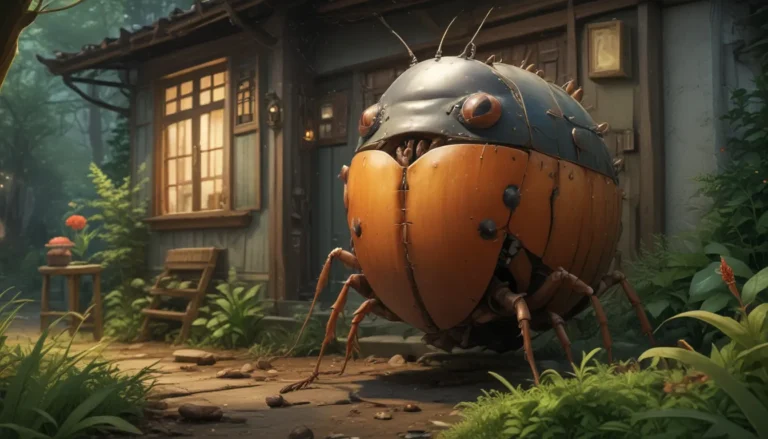The Comprehensive Guide to Growing Carnivorous Plants

Welcome to the fascinating world of carnivorous plants! Have you ever been intrigued by the idea of nurturing a pack of pitcher plants, a settlement of sundews, or a colony of Venus flytraps in your own home? Well, with the right knowledge and care, you can turn this dream into a reality!
In this extensive guide, we will explore the basics of caring for carnivorous plants, from understanding what they are to propagation, cultivation, growing tips, and managing pests and diseases. By the time you reach the end of this guide, you’ll have a deeper appreciation for these unique and intriguing plants. So, let’s dive in!
Understanding Carnivorous Plants
Carnivorous plants have evolved unique adaptations to catch and digest animals, primarily invertebrates like insects, arachnids, and small crustaceans. Despite their meat-eating habits, these plants are still photosynthetic and primarily rely on animals for supplemental nutrients in nutrient-poor soils where they thrive.
Did you know that there are over 800 known species of carnivorous plants worldwide, showcasing a remarkable diversity in their adaptations and mechanisms for capturing prey? These plants can be found in various habitats, from bogs and swamps to tropical regions with thin soils.
Cultivation and History of Carnivorous Plants
The evolution of carnivorous plants has occurred independently multiple times throughout history, driven by the need for nutrients in harsh environments. Charles Darwin’s work on “Insectivorous Plants” in the 19th century shed light on these unique plant species and dispelled myths about them being man-eating monsters.
Today, carnivorous plants are grown in botanical gardens and greenhouses worldwide, captivating hobbyist gardeners with their fascinating nature. The appeal of these plants lies in the challenge of caring for them and witnessing their predatory behaviors up close.
Propagation of Carnivorous Plants
Carnivorous plants can be propagated through various methods such as seeds, vegetative propagation, division, and transplantation. From starting seeds in a suitable medium to dividing mature plants for new growth, there are numerous ways to propagate these unique species.
Specific research on the species you are growing is essential for successful propagation. Each method comes with its own set of requirements, so it’s important to understand the needs of the plant before you begin.
How to Grow Carnivorous Plants
Growing carnivorous plants indoors requires replicating their natural habitat conditions, including high humidity, direct light, and nutrient-poor acidic soils. Using terrariums or containers to maintain humidity levels and providing adequate light through windows or LED lights are crucial for their growth.
Watering carnivorous plants with distilled or naturally occurring water sources is recommended to avoid mineral buildup in the soil. Feeding these plants with insects or using a diluted organic fertilizer during the growing season can help supplement their nutritional needs.
Tips for Growing Carnivorous Plants
- Provide direct, bright lighting for optimal growth.
- Maintain a highly humid microclimate around your plants.
- Use distilled or naturally-occurring water sources for irrigation.
Notable Carnivorous Plant Species
Some of the most iconic carnivorous plant species include the Butterwort, Pitcher Plant, Sundew, and Venus Flytrap. These plants exhibit unique mechanisms for capturing prey, from sticky mucilage on leaves to pitfall traps that lure insects into their digestive pools.
Each species has its own distinctive features and care requirements, making them a fascinating addition to any plant collection. Whether you’re drawn to the vibrant colors of the Butterwort or the swift trapping action of the Venus Flytrap, there’s a carnivorous plant for every enthusiast.
Managing Pests and Disease
Carnivorous plants are susceptible to pests like fungus gnat larvae, mealybugs, and diseases like Sarracenia Rhizome Rot. Controlling these issues through preventive measures, such as maintaining soil cleanliness and using natural remedies, can help keep your plants healthy and thriving.
By understanding the common pests and diseases that affect carnivorous plants, you can take proactive steps to prevent infestations and ensure the longevity of your botanical carnivores.
Best Uses for Carnivorous Plants
Carnivorous plants serve as excellent companion plants alongside traditional houseplants, offering a unique contrast in appearance and behavior. Their specialized care requirements present a rewarding challenge for plant enthusiasts looking to expand their botanical knowledge.
Whether you’re looking to add a touch of intensity and savagery to your plant collection or simply appreciate the beauty and intrigue of carnivorous plants, these unique specimens are sure to captivate and inspire your gardening endeavors.
Conclusion
In conclusion, growing carnivorous plants is a rewarding and exciting venture that offers a glimpse into the fascinating world of botanical predation. By following the guidelines outlined in this guide, you can successfully cultivate and care for these captivating plant species in your own home.
Whether you’re a seasoned plant enthusiast or a budding gardener, experimenting with carnivorous plants is a fulfilling and educational experience. So, embrace the challenge, explore the diversity of carnivorous flora, and enjoy the wonder of nature’s predatory plants in your own space.
If you have any experiences, questions, or comments to share about growing carnivorous plants, feel free to reach out in the comments section. We’d love to hear from you and continue the conversation about these extraordinary botanical carnivores.
Happy growing and may your carnivorous plants thrive in all their predatory glory!





